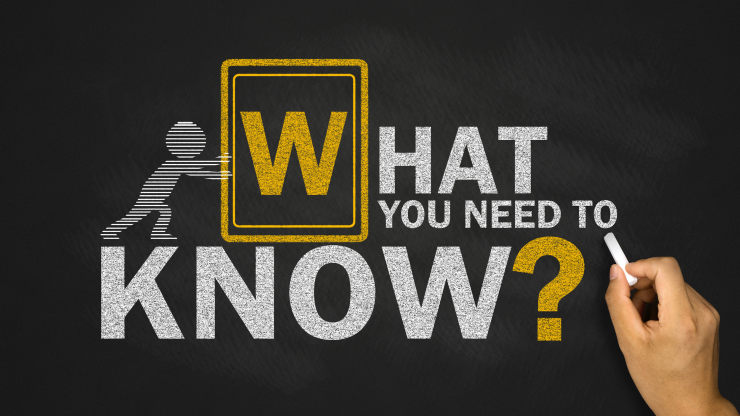
Did you know that a majority of Instagram users discover products and inspiration using the app’s search bar and Explore tab instead of heading using search engines like Google? This shift marks a turning point in how audiences discover content online. Agencies now need to adapt to this and appeal to not only search engines but social media platforms as well.
Let’s unpack how social media has become a pseudo search engine and outline strategies your agency can employ to increase the visibility of your content.
Understanding Social Media As a Search Engine
Today’s social media platforms utilise algorithms to serve their users relevant content based on recent activities and search queries. Dissecting these algorithms is key to understanding how to create content that flexibly responds to these signals.
These are a few key algorithm signals to take note of:
- Search Queries: Every time a user types a keyword into Instagram’s or Pinterest’s search bar, that term becomes a powerful relevancy signal. Platforms track which results they interact with more.
- Engagement Metrics: Likes and comments tell the algorithm that your content resonates. Higher engagement on search-driven posts boosts their chances of appearing in future results.
- Content Metadata: Hashtags, captions, alt text and pin descriptions act like micro-keywords. Well-crafted metadata helps algorithms categorise your content and match it to related queries.
- User Behaviour Patterns: Algorithms learn from each user’s scroll speed, watch times and repeat views. If someone consistently reopens DIY tutorial videos, platforms will tailor more content relevant to it.
Through tuning into these signals, your agency can craft content that surfaces at precisely the right moment of discovery, ensuring clients connect with the audiences most likely to engage.
Why Agencies Need to Pay Attention
As search behaviour fragments across platforms, agencies that ignore social search risk losing a large potential for client outreach.
These are 4 key reasons why prioritising social media as a search engine is non-negotiable:
1. Audience Shift
People now spend upwards of 80% of their mobile time inside social apps rather than traditional search browsers. Engaging with audiences where they are more active integrates your content seamlessly into daily routines.
A concise, eye-catching Instagram Reel can hook viewers in just a few seconds, while a slow-loading landing page risks an immediate drop-off
2. Untapped Discovery Channels
Early in-app search optimisation unlocks features like Instagram Guides and Pinterest Lens. Through tailoring metadata and formats to these channels, your clients’ content surfaces in relevant queries before competitors catch on, expanding share of voice organically.
3. Enhanced ROI
Social-search content enjoys an extended lifespan as keyword-rich posts or well-tagged pins can drive organic traffic for months. This evergreen performance reduces ad spend, freeing up budget to reinvest in higher-value creative or deeper analytics.
4. Strengthened Brand Authority
Regularly appearing in in-app search results positions your clients as trusted experts. Consistently answering common queries boosts engagement, reinforcing both algorithmic authority and genuine user trust.
Through integrating social-search into your content strategy, your agency will capture real-time intent, drive lasting engagement and secure a competitive edge in the discovery landscape.
Optimisation Tactics for Discovery Platforms
Now that the context has been set up, we explore a 4-step cycle to optimise your presence on each platform. The flowchart below illustrates this simplified process

These steps are quite straightforward and strengthen the more iterations that you go through. These individual steps are broken down in the following sections.
1. Conduct In-App Keyword Research
Every platform has its vocabulary. Follow these steps to uncover the terms your audience is already using:
- Use platform search bars to capture autocomplete suggestions
- Dive into Instagram Search Suggestions and Pinterest Trends
- Build a keyword library grouped by content pillar and user intent
This step include informing your content strategy with authentic audience language and uncovering high-value search terms for ongoing optimisation. Keep this process ongoing to ensure your content always aligns with evolving platform language.
2. Crafting Metadata
Based on the previous step, you can now craft metadata to suit user search trends. These steps help you optimise your post metadata:
- Align titles, captions, alt text and hashtags with target queries
- Place primary keywords early and weave in secondary terms naturally
- Add clear calls to action and respect each platform’s character limits
Crafting intent-aligned metadata improves discoverability, boosts click-through rates and ensures your content appears in the right searches.
3. Create Platform-Specific Content
Every network has its content DNA, so your assets must be tailored to fit each channel’s style, format, and user expectations.
This table sums up the expected and optimal format on these discovery platforms:
| Platform | Format | Length | Aspect Ratio | Key Elements |
| Reels | 15–90 seconds | 9:16 | Subtitles, on-brand colour treatments, interactive stickers | |
| Stories | 10 seconds/slide | 9:16 | Polls, quizzes, swipe-up links | |
| Carousels | 2–10 slides | 1:1 or 4:5 | High-resolution images/videos, concise captions | |
| Feed Posts | N/A | 1:1 or 4:5 | Geotags, up to 2,200-character captions | |
| Static Pins | N/A | 2:3 | Descriptive titles, overlay text | |
| Idea Pins | Multi-page | 9:16 | Step-by-step imagery, mood-board style | |
| Video Pins | 4–60 seconds | 9:16 | Mini how-tos, clear headers | |
| Rich Pins | N/A | Varies | Metadata enhancements (pricing, availability, recipe details) |
Regular monitoring ensures you stay attuned to audience behaviour, platform algorithm shifts and emerging trends.
4. Monitor and Track Content
After posting your content, monitoring for engagement will help in future iterations. These help identify what works and strengthen your content framework.
Simple methods of monitoring your content can be done through the following:
- Monitor impressions, click-through rates and engagement metrics
- A/B test metadata, content formats and posting schedules
- Feed fresh insights back into your keyword library and metadata rules
Continuous measurement and iteration drive data-driven improvements, prolong relevance and sustain growth over time.
Conclusion
As social media continues to eclipse traditional search engines, agencies that embrace in-app discovery will stay ahead of the curve. Continue experimenting, refining and aligning every piece of content with audience search patterns.
That commitment to ongoing optimisation will transform social channels from mere broadcast platforms into powerful engines of discovery.
Your next steps
Putting social-search at the heart of your content strategy ensures every post is discoverable, engaging and ROI-driving.
As a white label agency, we specialise in turning social channels into powerful discovery engines
Ready to transform social searches into conversions? Reach out today and let’s power your social-search strategy together.
Related Articles
Why Choose Us?
With decades of experience and a dedicated team, we are committed to delivering high-quality web development services. Our client-centric approach ensures that we understand your needs and provide solutions that exceed your expectations.








